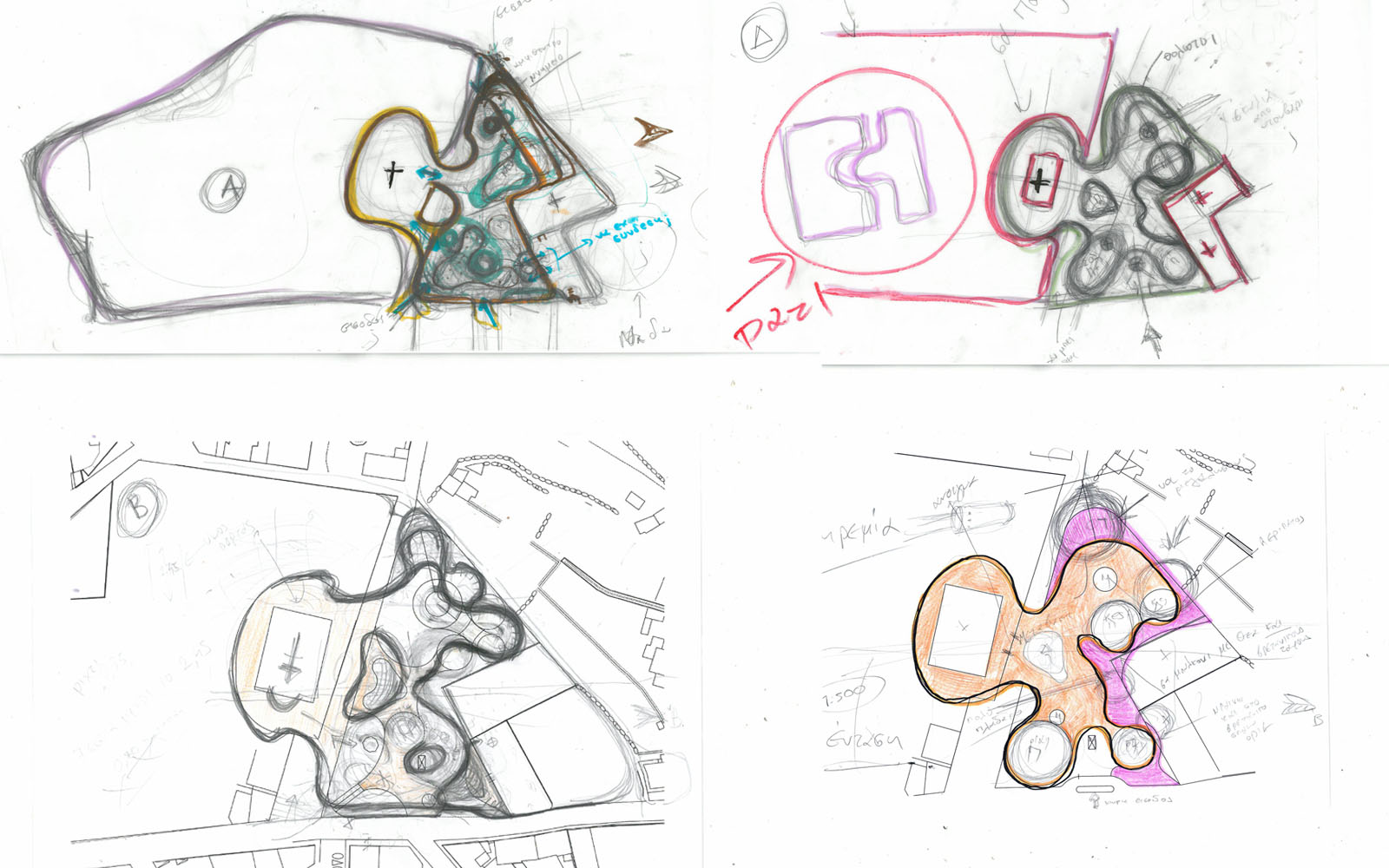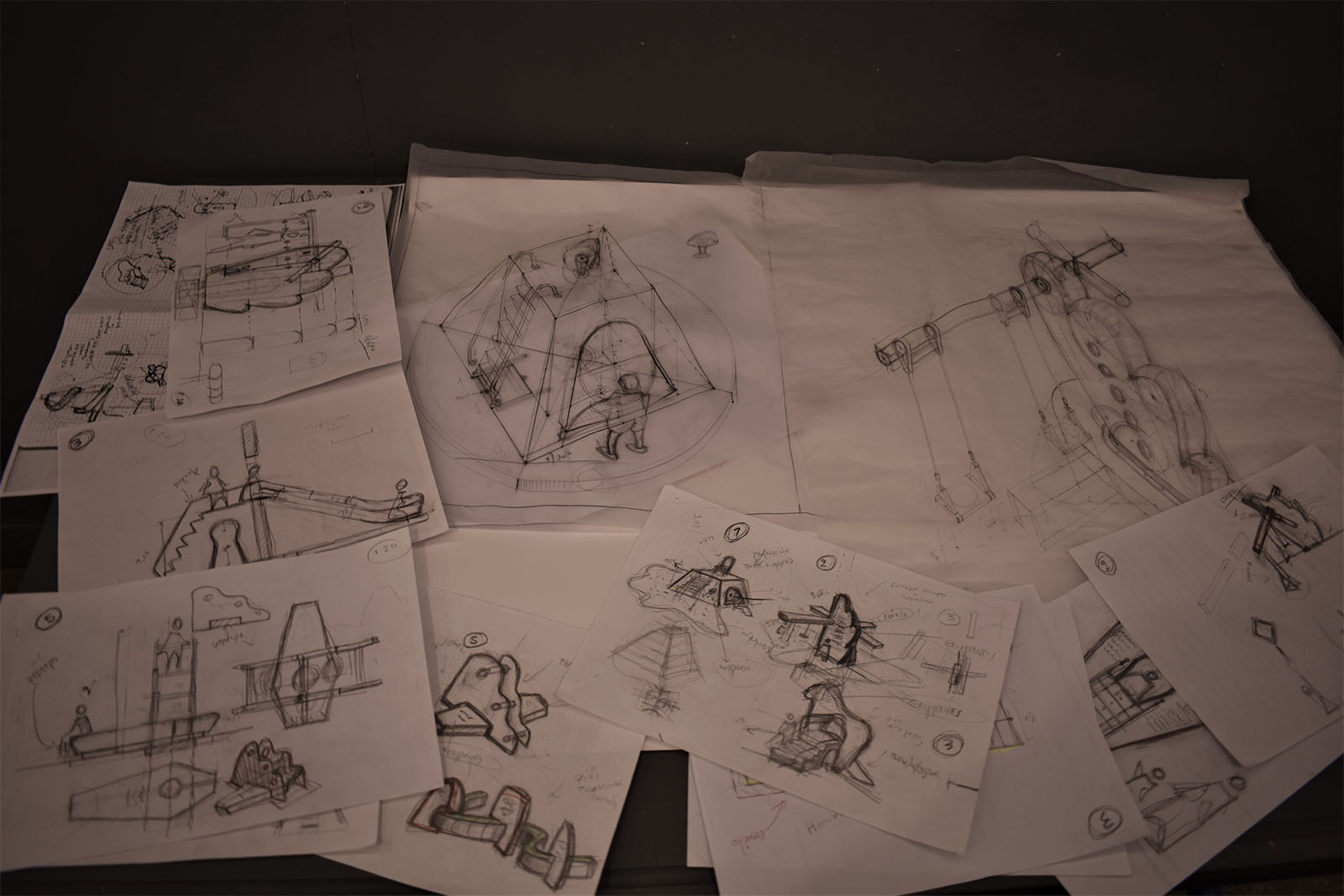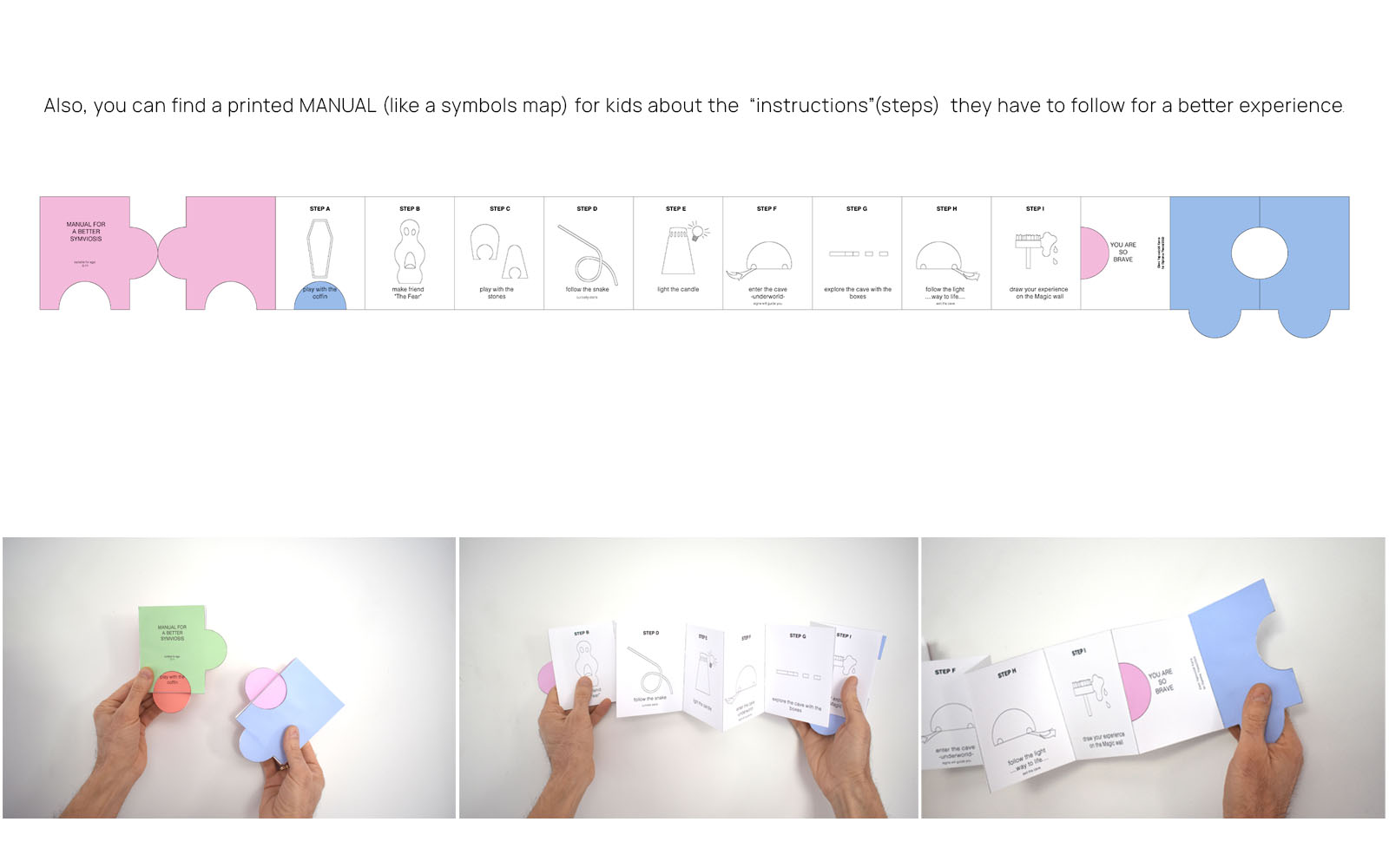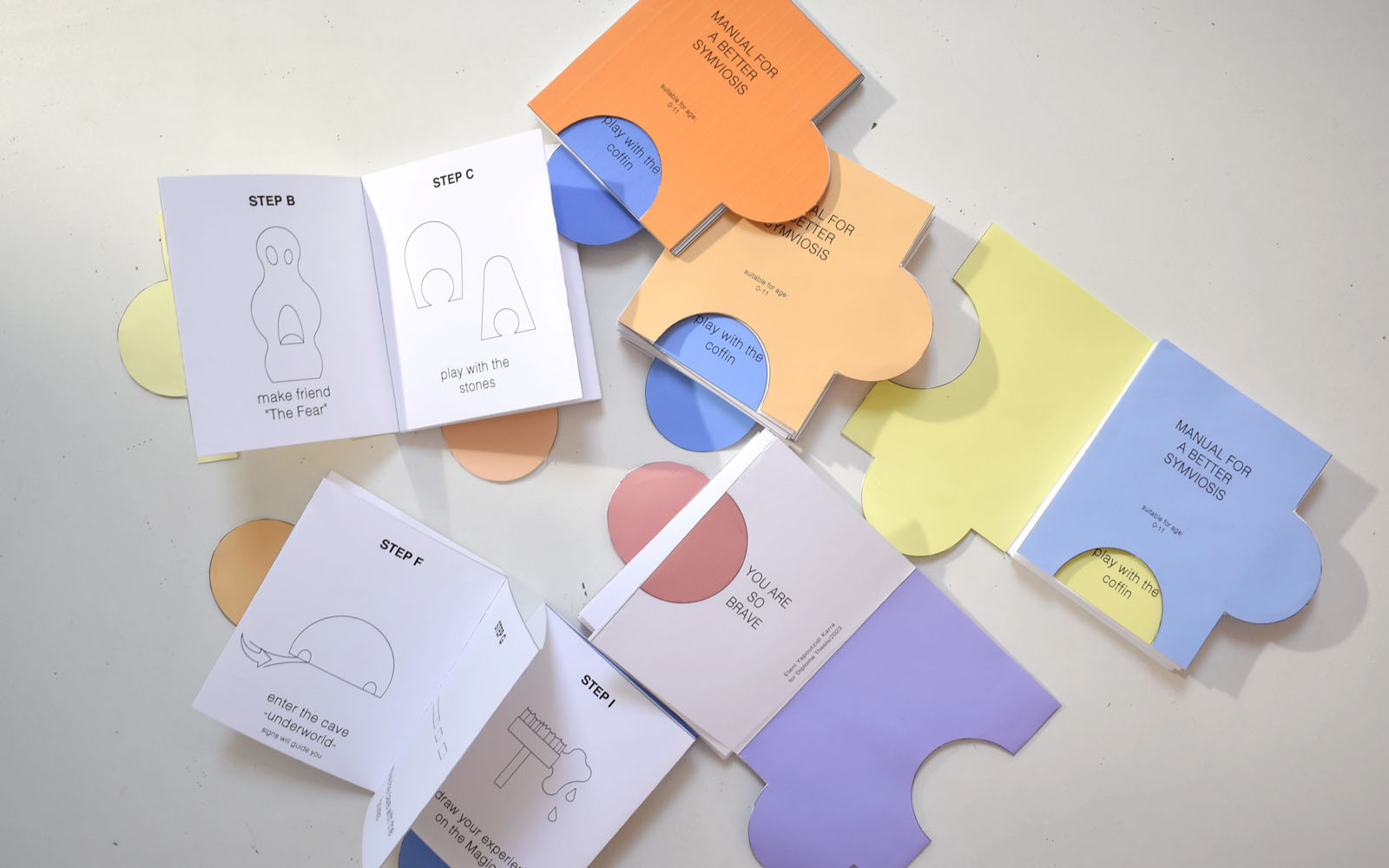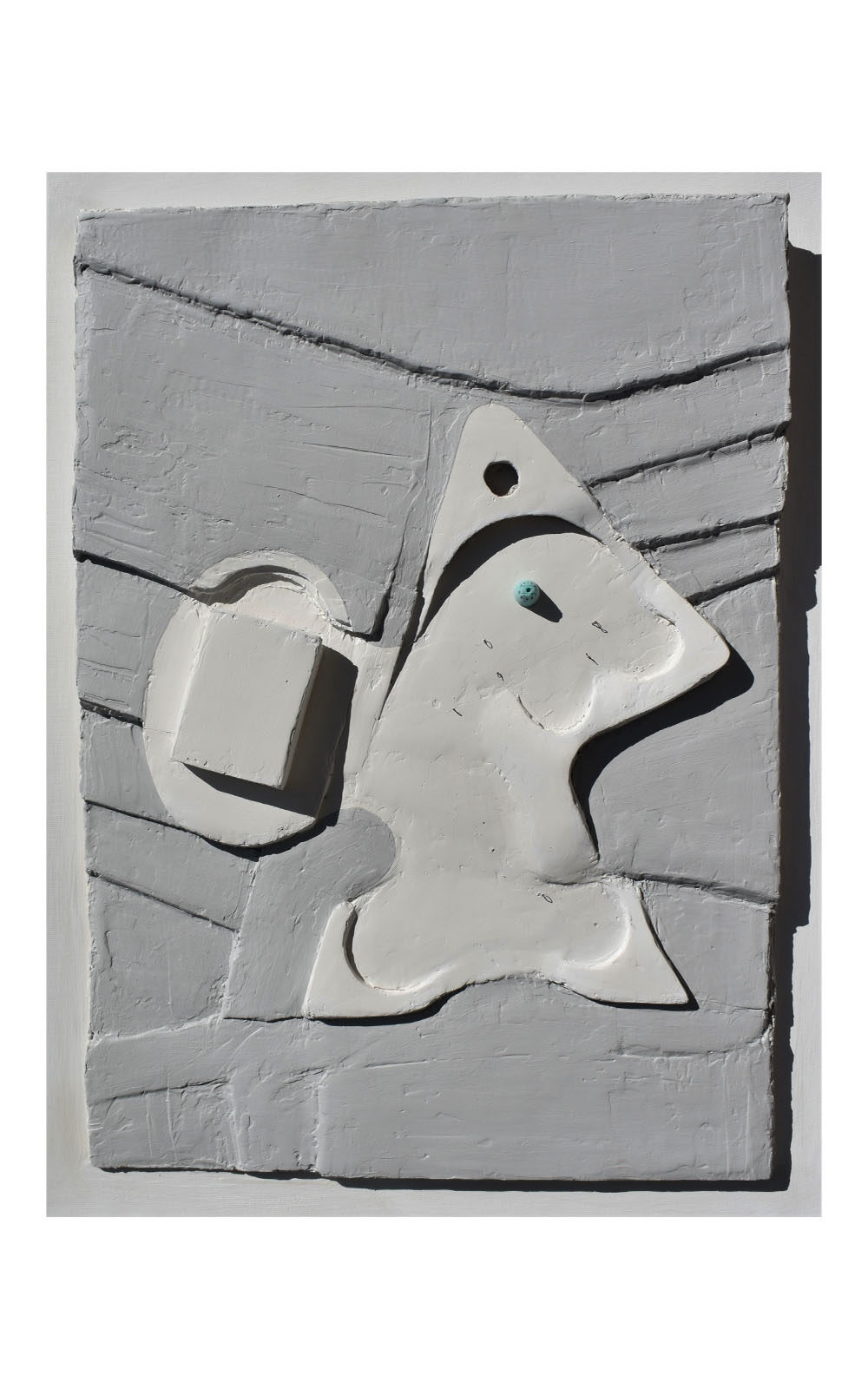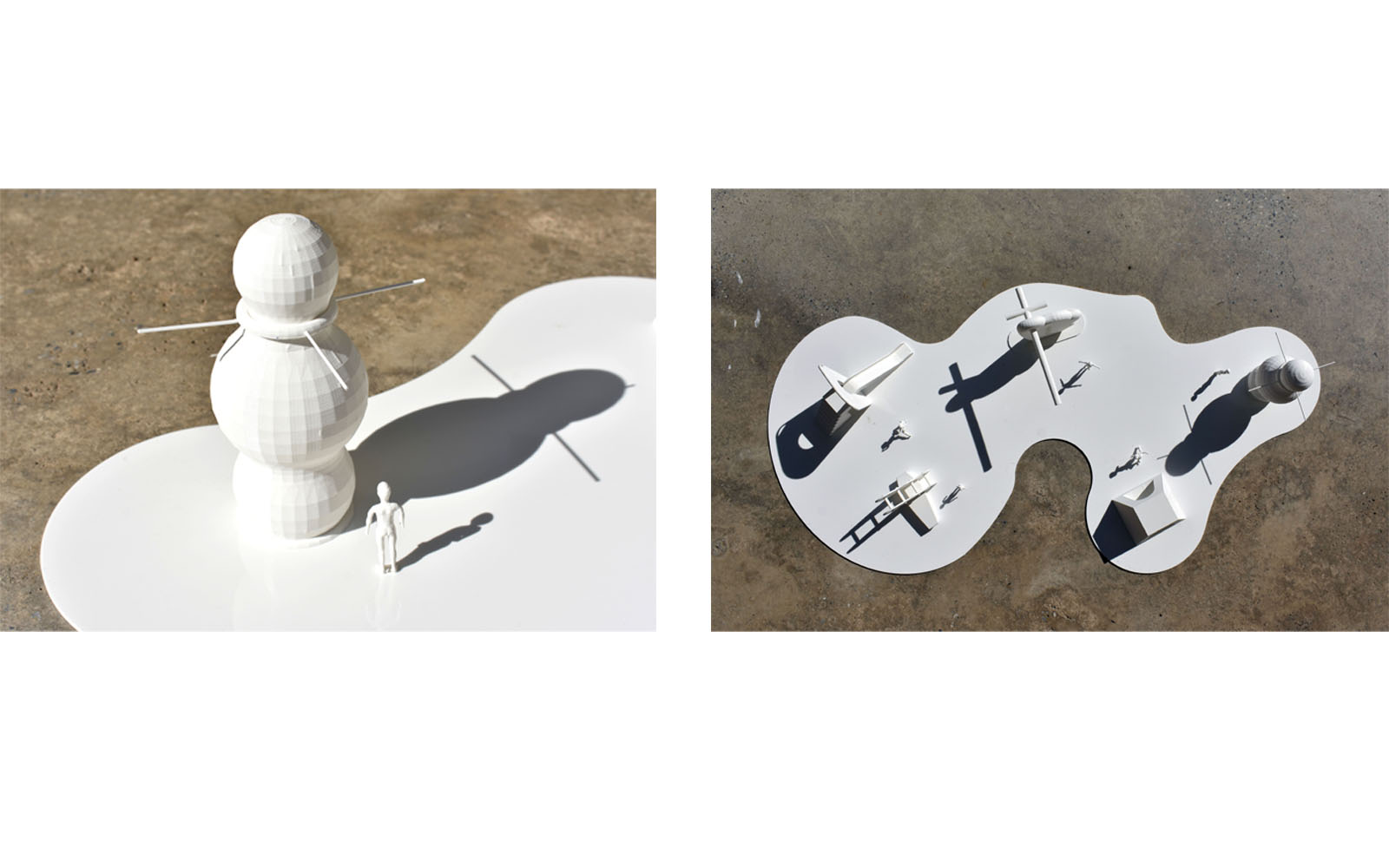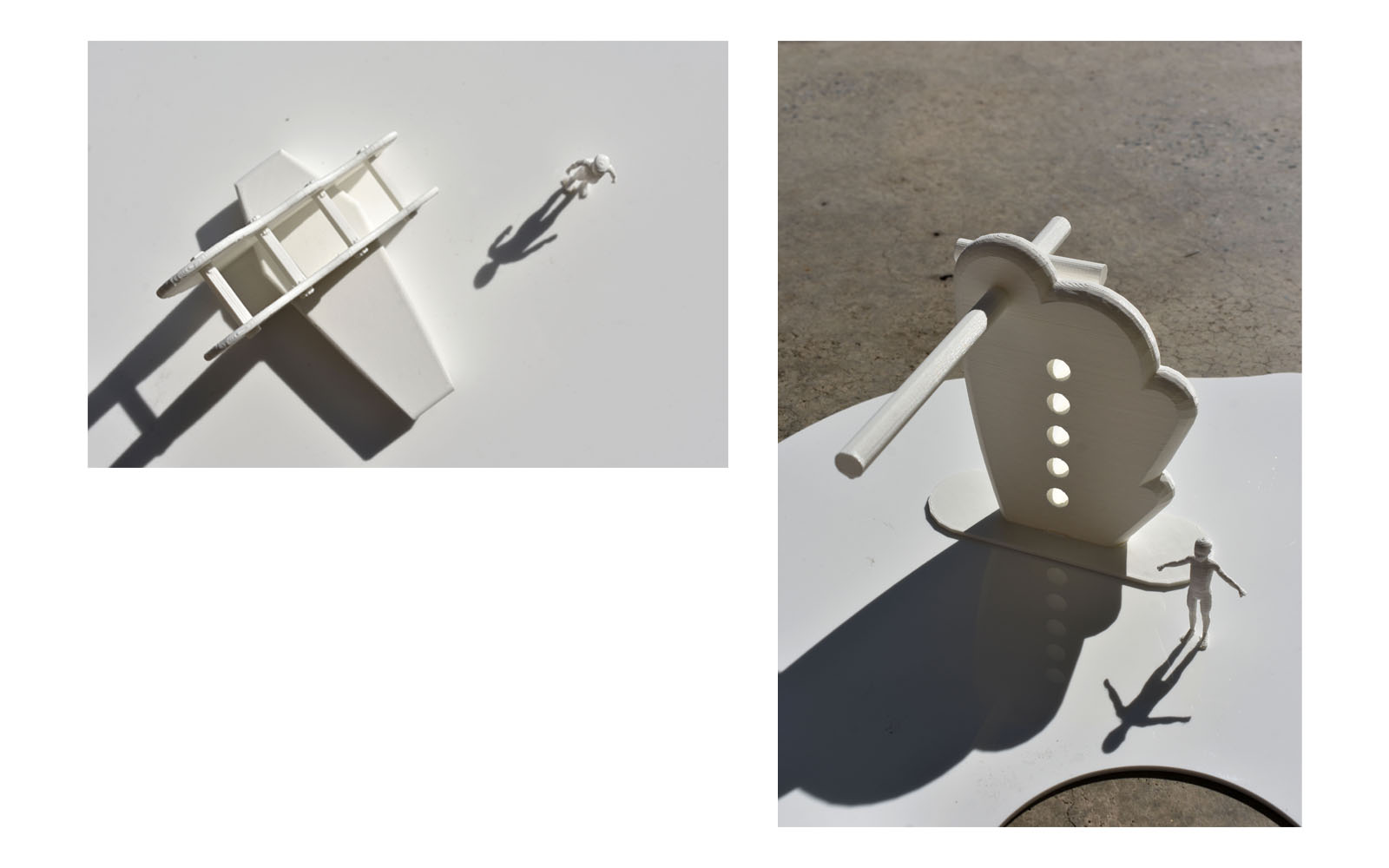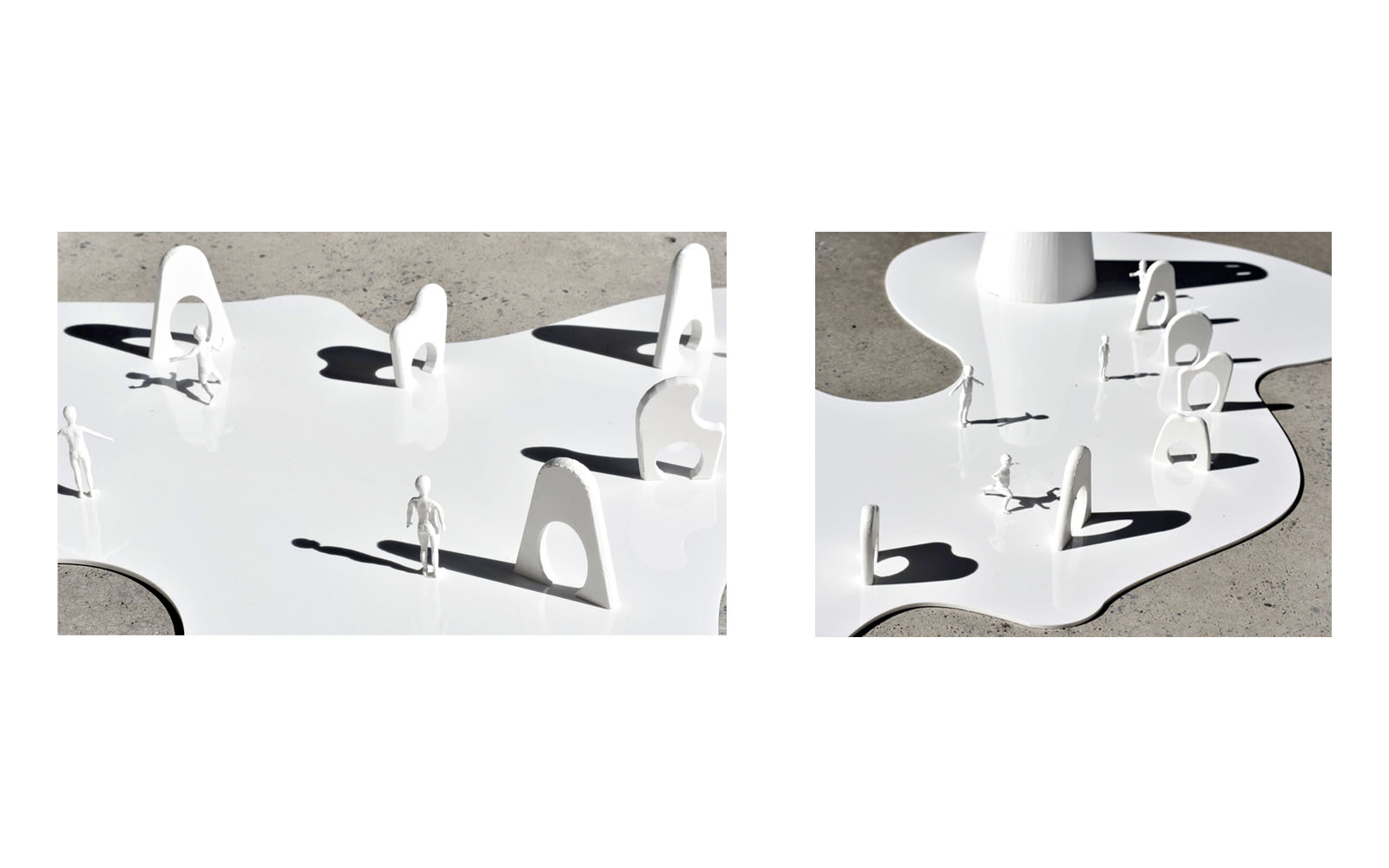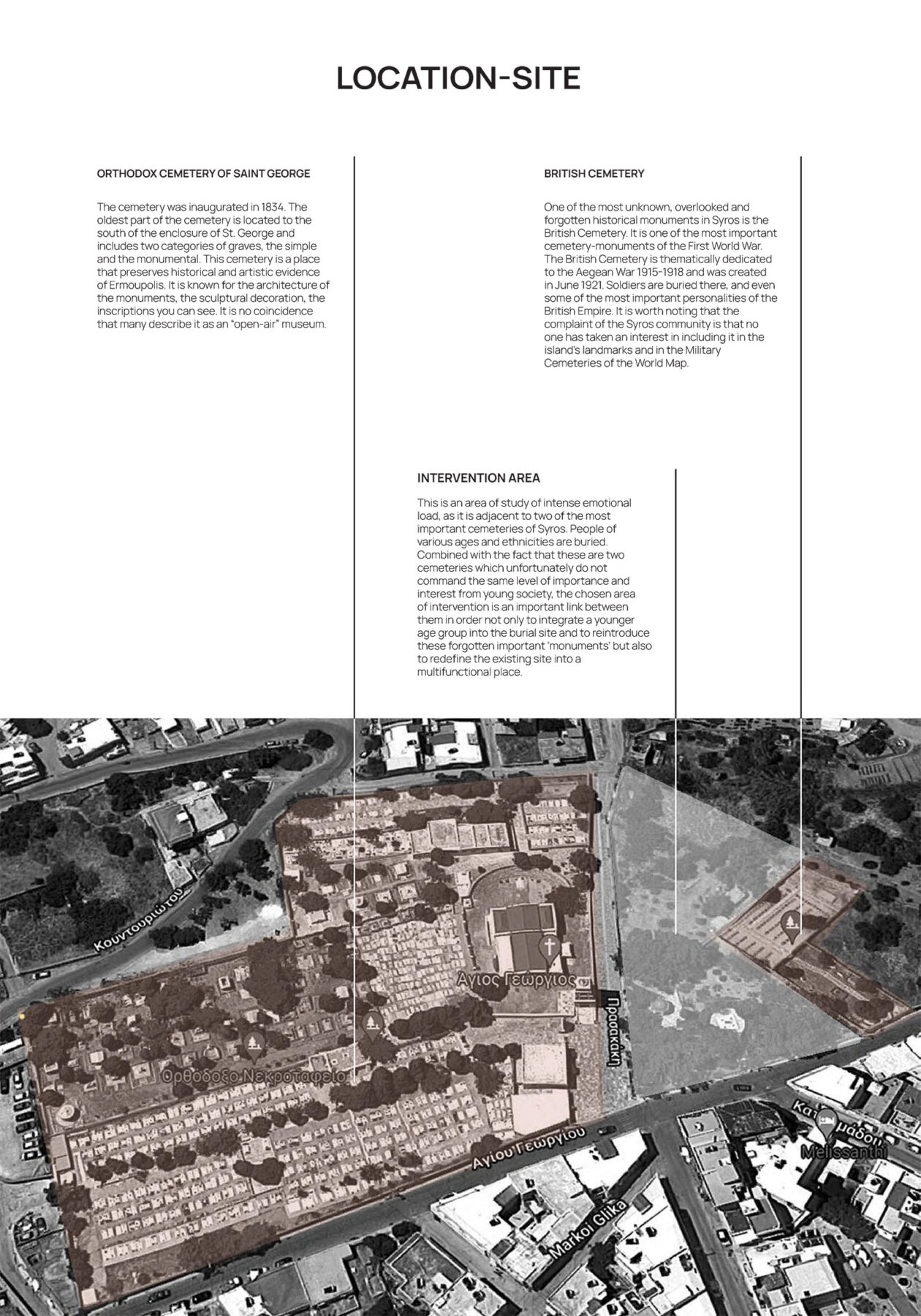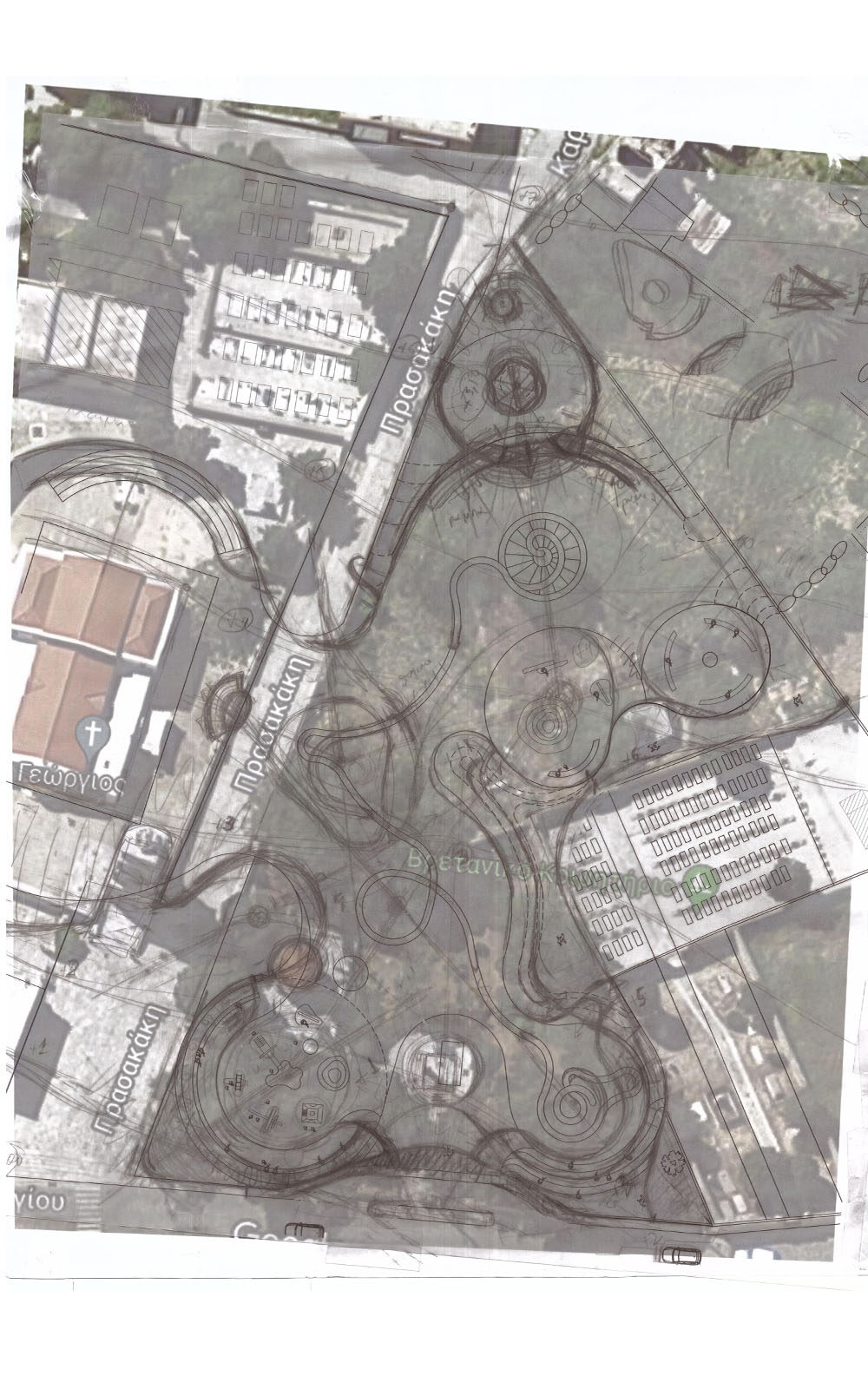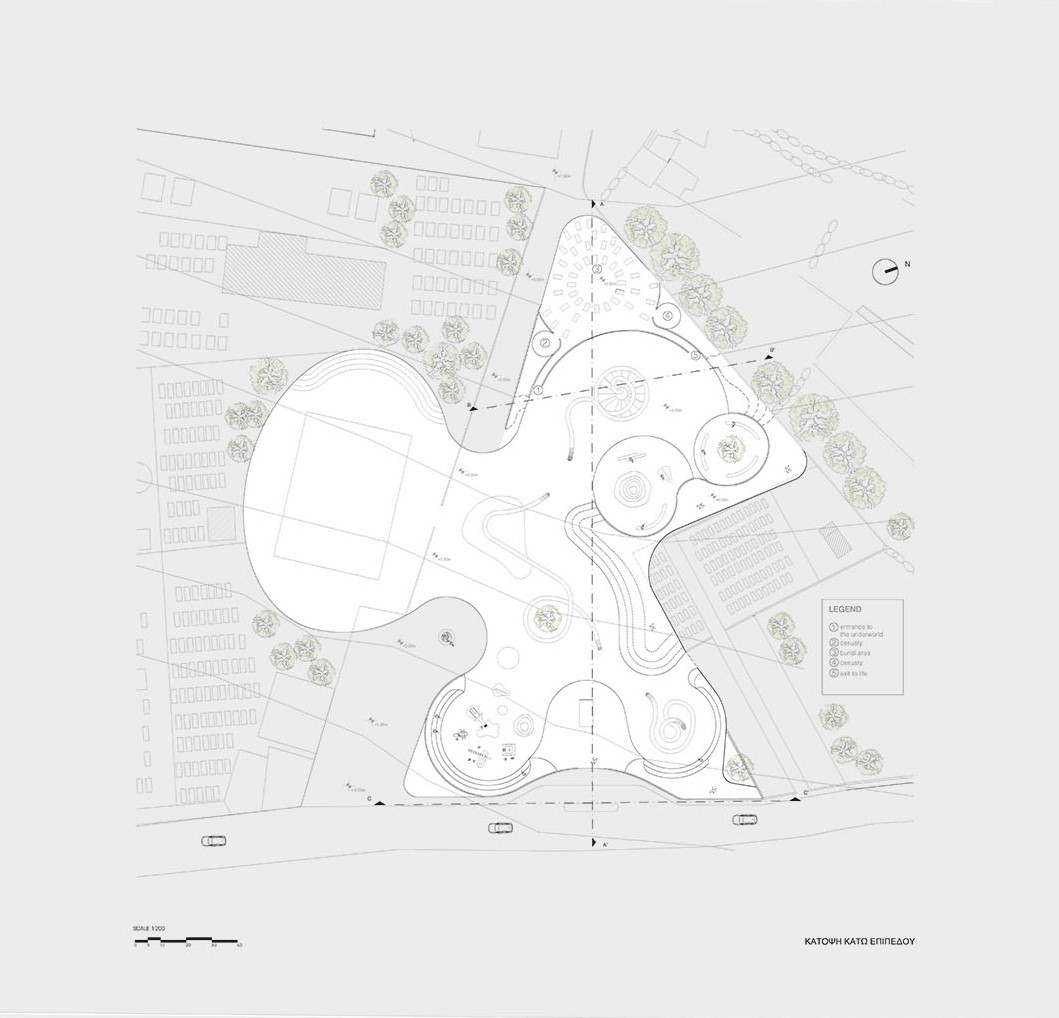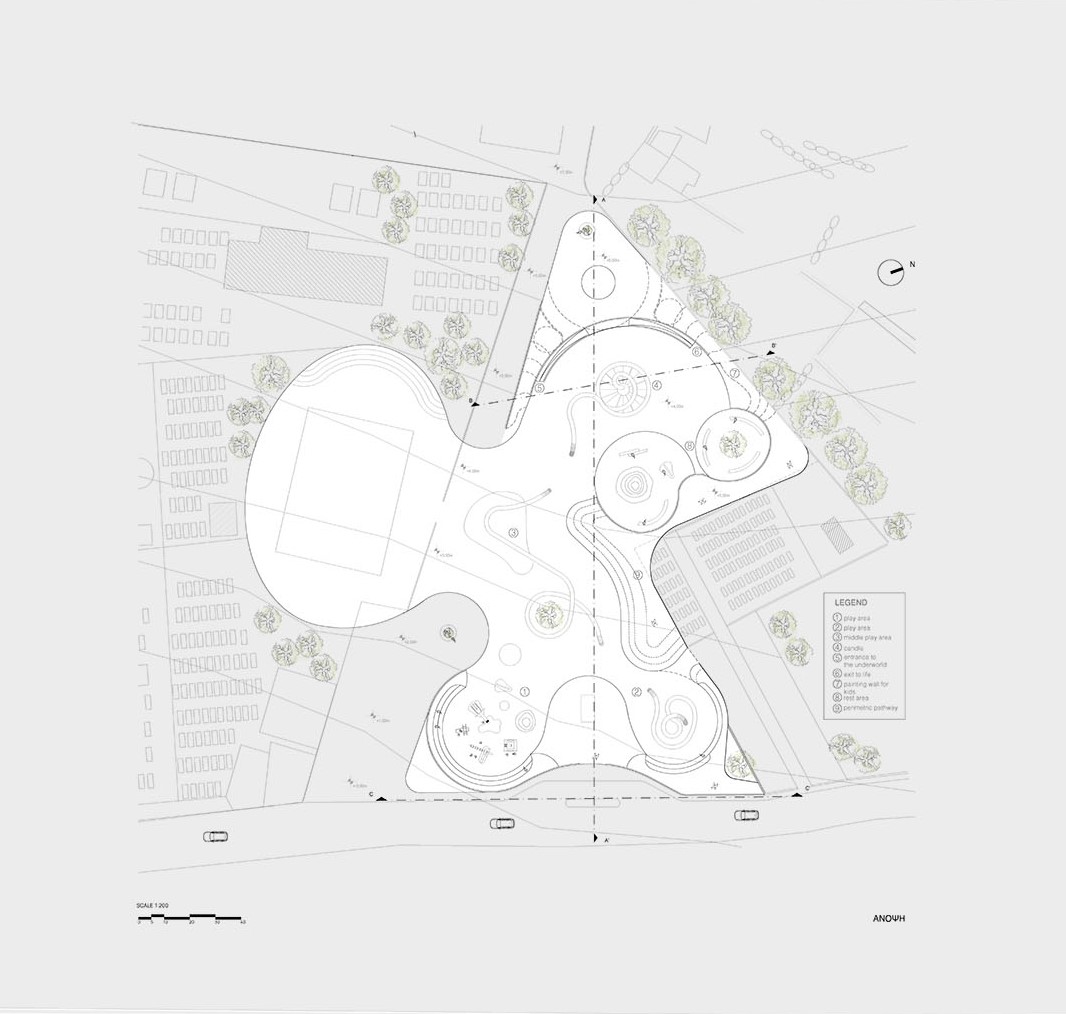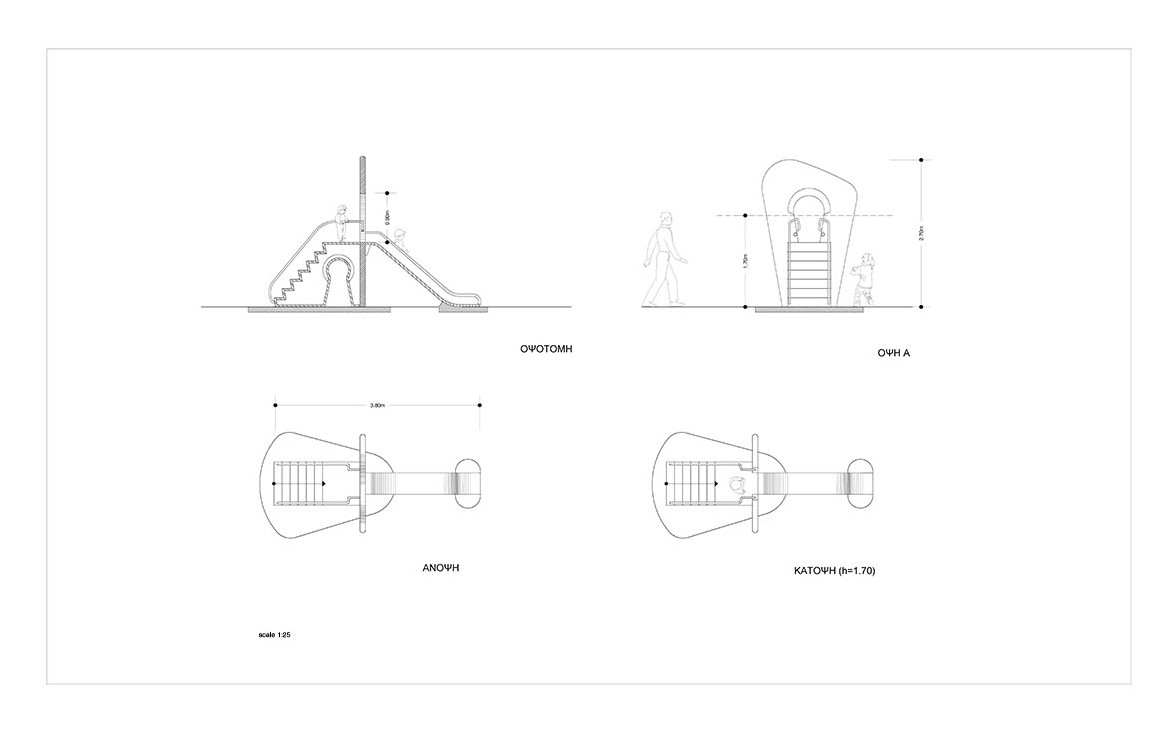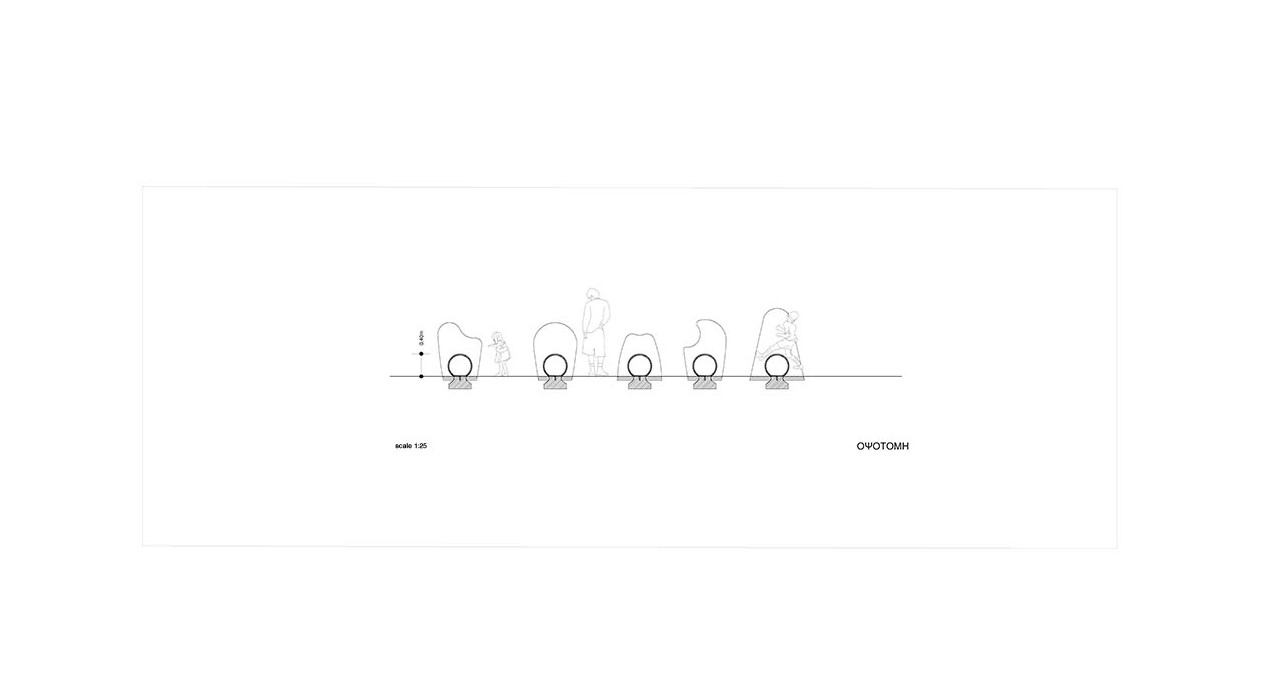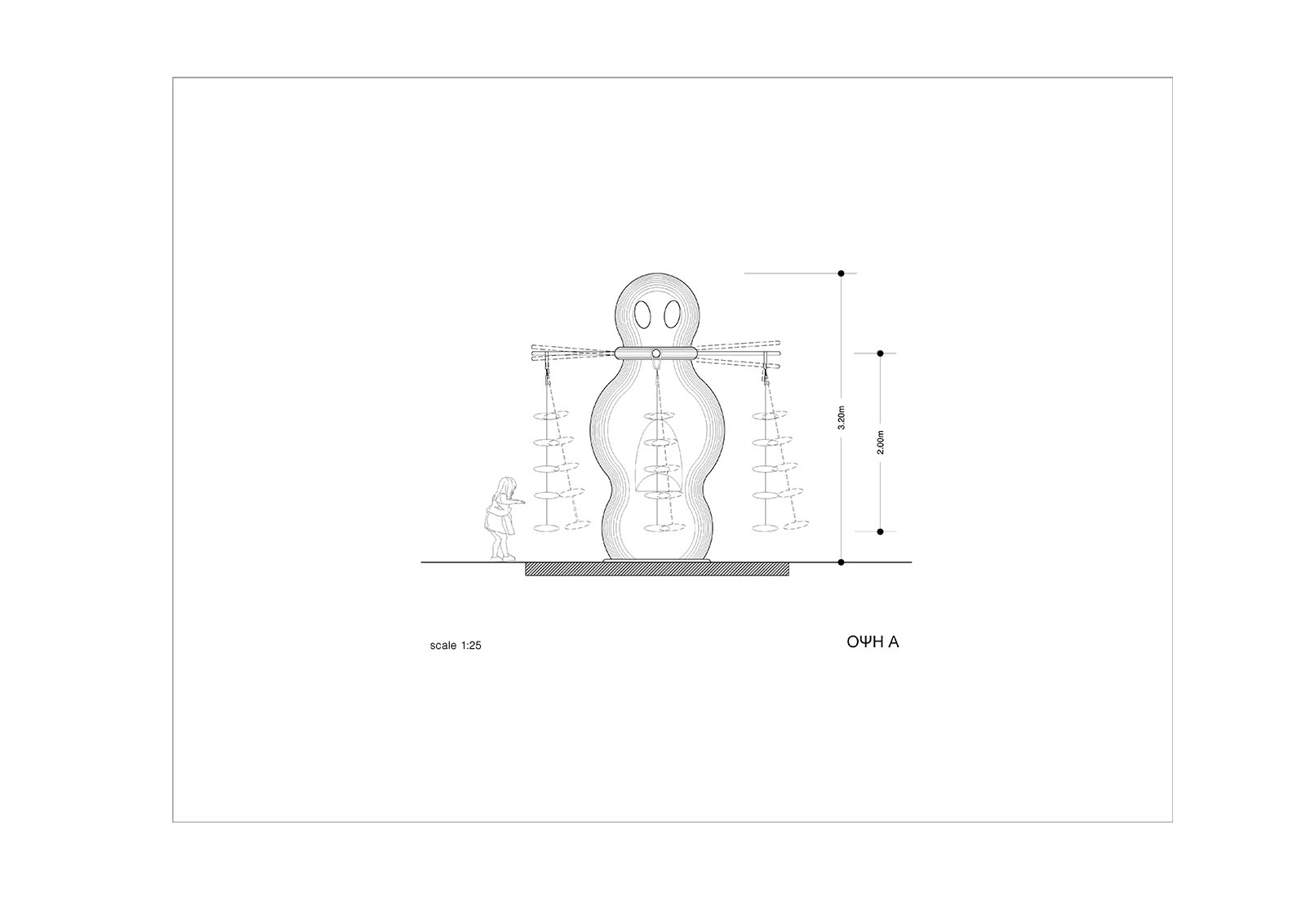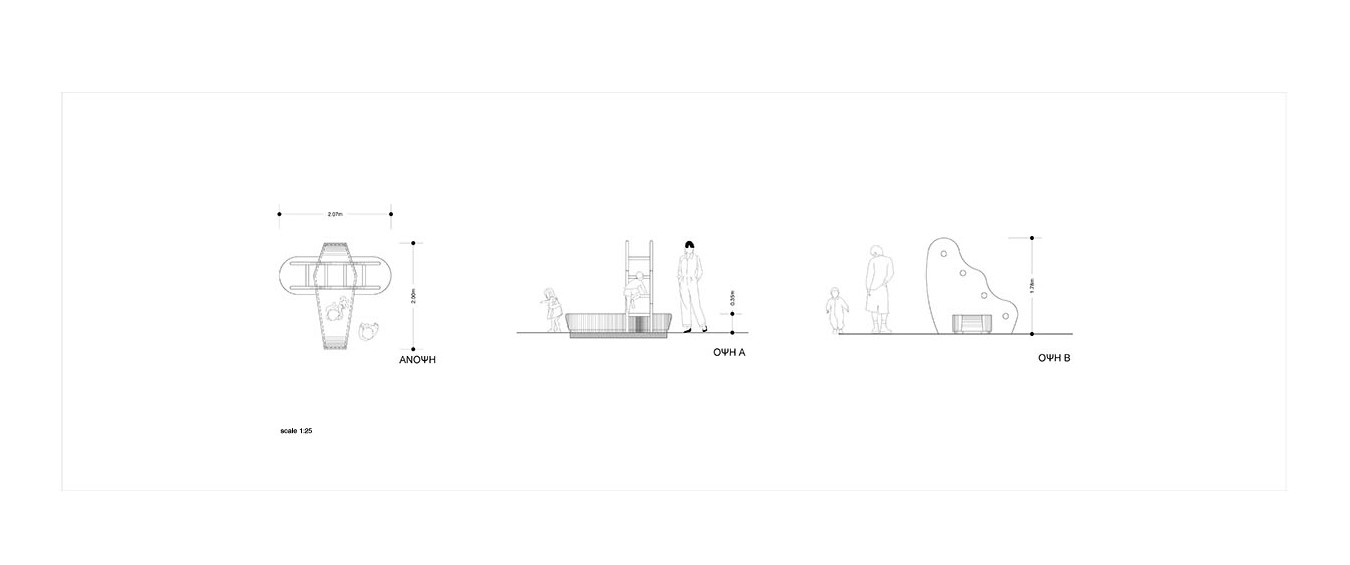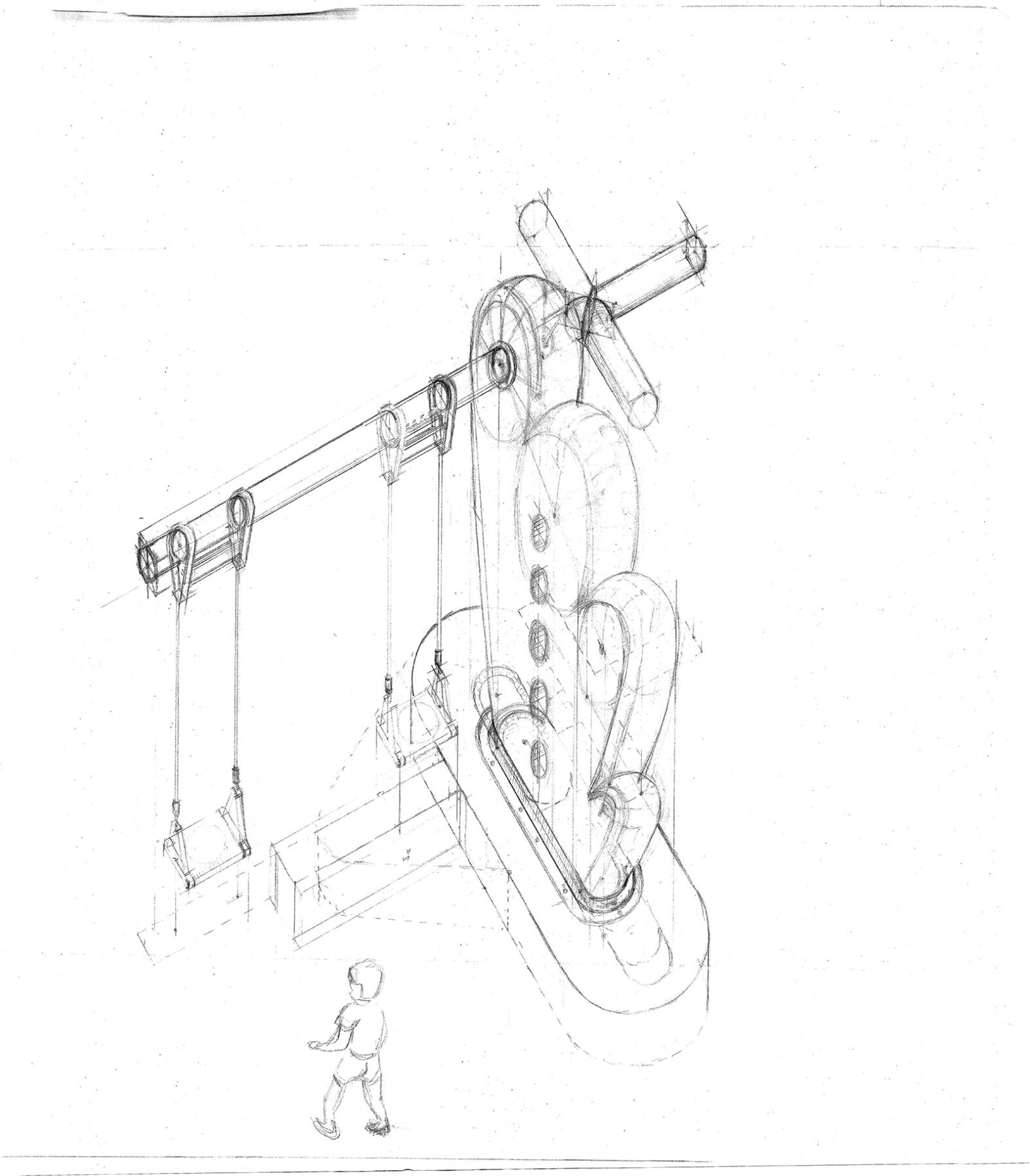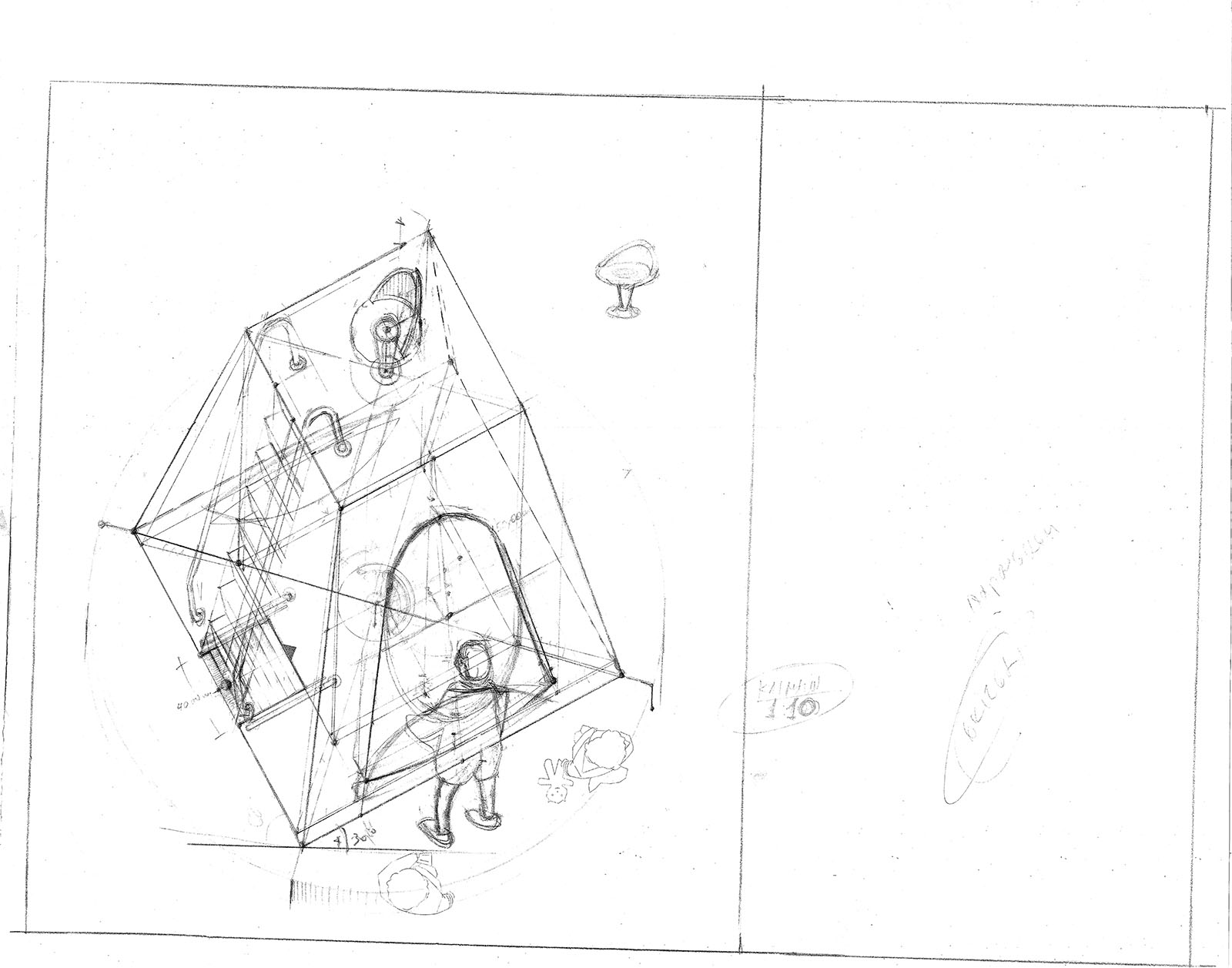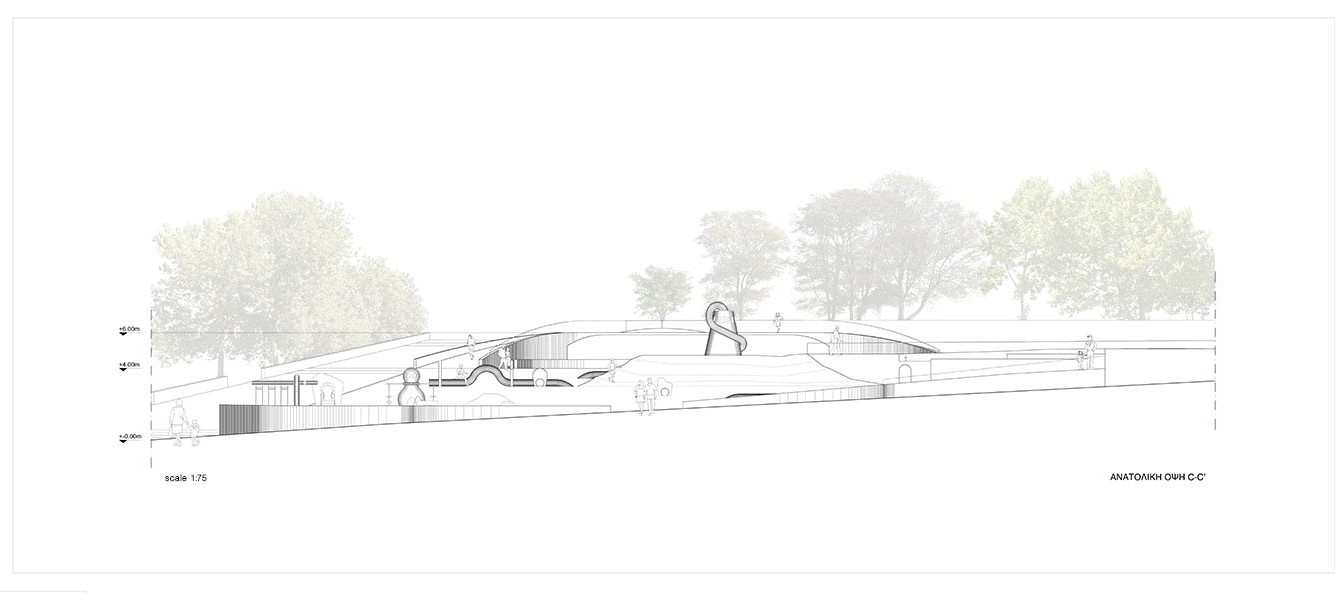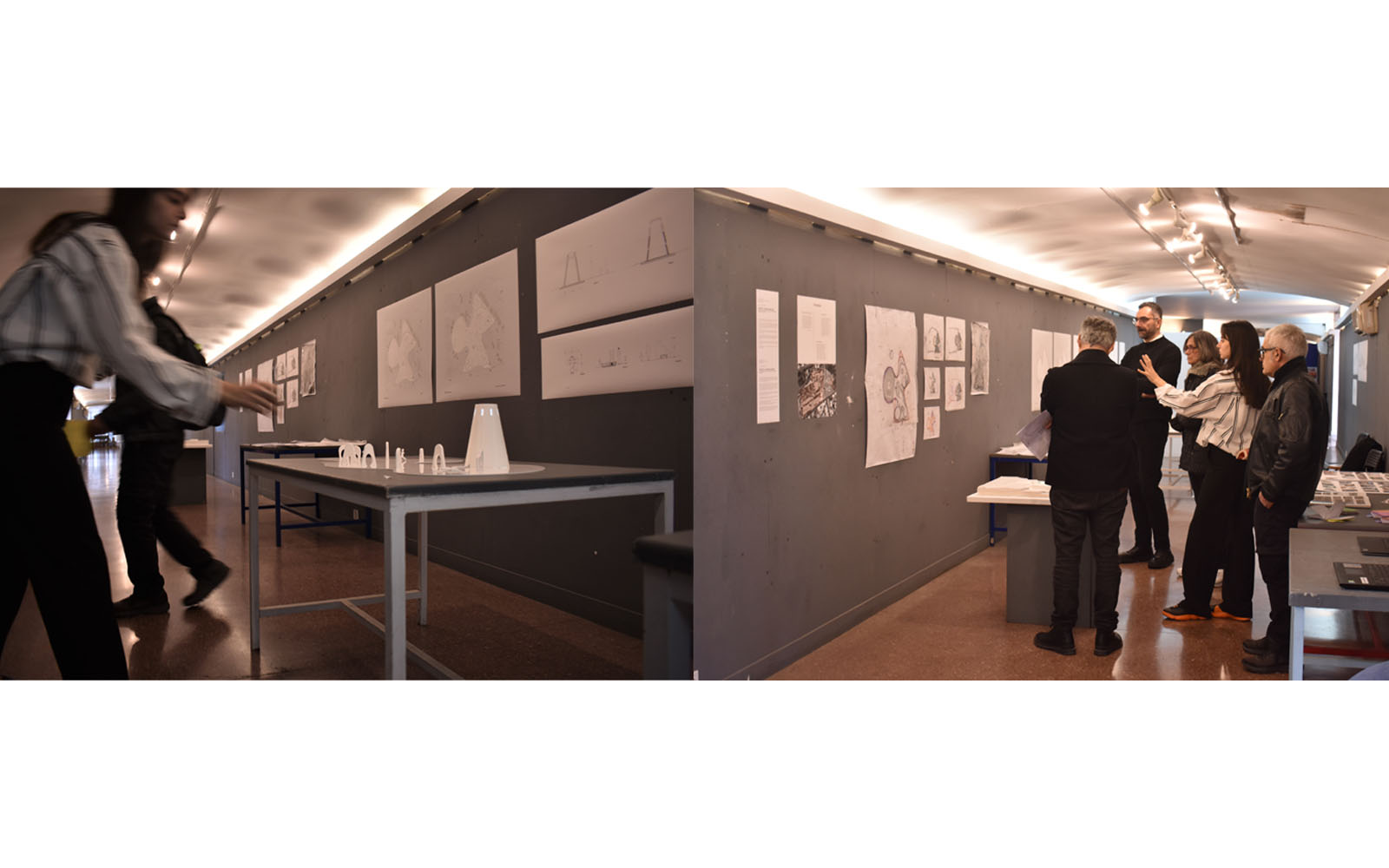In this diploma thesis, Eleni Yapoutzidi Karra reintroduses to the children the idea of the loss. Influencing by Radical Design and Memphis, she intervened into an existing cemetary and she tranformed into a thematic multifunctional park.
-text by the creator
THE IDEA
The world’s population is increasingly living in a confined, densely populated area.This puts a lot of pressure on existing infrastructure. This should therefore lead us to rethink the existing space into multifunctional parts.
The world will need revolutionary- RADICAL design interventions.
The project is also linked to a personal traumatic experience, the first death in the family, that of my grandfather, and to a general reflection on ways of familiarising children with loss, bearing in mind the negative impact it can have on their mental health causing them psychosomatic, post-traumatic problems, etc. later in life, which is a result of the lack of preparation for dealing with death.
The future is intertwined with children, who are the main axis of this project.
The research takes place indicatively in the city of Hermoupolis on the island of Syros. More precisely, the cemetery-park is situated between the orthodox cemetery of Aghios Georgios and the British cemetery.
The design influences come from the design logic of Radical Design and Memphis in terms of a playfull approach to serious and non life issues.
The children cemetery-park consists of two main zones, the zone of intensity-life, Zone (A), and the zone, serenity-death, Zone (B).
It regards a thematic park based on the experience of death revolving around two main aspects: a symbolic playground and a children cemetery.
Once can meet symbols of death in the playground equipment’s design, such as imaginary crosses, nests, coffins, tombstones, caves, personifications of fear and joy, big heights in some constructions, that way approaching death with a playful and simple way for children to understand and become familiar with.
DESIGNING
The cemetery-park’s design makes complete use of the ground where research took place.
Above the undercut aspect a balcony-lookout is constructed, leading to a path offering a view of the sea horizon. The path extends in the northern part of the cemetery-park playing with the heights, making use of the British cemetery’s borderfence. Its high points allow the passenger to gaze not only upon the neighbouring British graveyard and its monuments, but also upon the children cemetery park, situating the museum aspect these spaces acquire, monuments, sculptures, thanks to being viewed from above.
We become aware therefore that the flow of movement in a general framework starts intentionally from intensity (life) to the underworld, serenity, and from there returns to life in order for the children to grasp the idea that life continues after death.In particular, moving from zone A to B starts with a sculpture toy that ends in the tallest monument of zone B leading up to the burial grounds. That monument resembles a lighthouse-candle from where light is emitted.
Children that way understand that the play stops (life) and serenity dominates (rest).
Starting from the main eastern entrance, we meet the first zone (A) with the space of toys, where essentially the first connection-reconciliation with the symbols and idea of death takes place.
Symbols are transformed into toys and that way the space looks more like a playground.
Zone (B) is the space of children cemetery. This place is undercut with twilight. Now, the time of play gives in to respect for the deceased. The entrance on the left is constructed in such a way, that foreshadows the entrance of the children in a different world, underground, in contrast to the one where the intensity of play dominates, sparking their interest and curiosity. After the exploration in the undercut aspect, the exit follows (north side) from the “underworld” which is marked with a bright path.
Children that way become aware that they are about to enter again a world “bright”, full of life.
Exiting, they meet a big wall upon which they have the opportunity to paint their experience, allowing them to further contemplate upon their experience.
Facts & Credits
Project title “SYMVIOSIS”-Children Cemetery
Project type Diploma thesis
Student Eleni Yapoutzidi Karra
Supervisor Dimitrios Fragkos
University Architecture School of A.U.Th
Date February 2023
READ ALSO: CASA CHOUSO, Ansião - Portugal | by Bruno Dias Arquitectura
